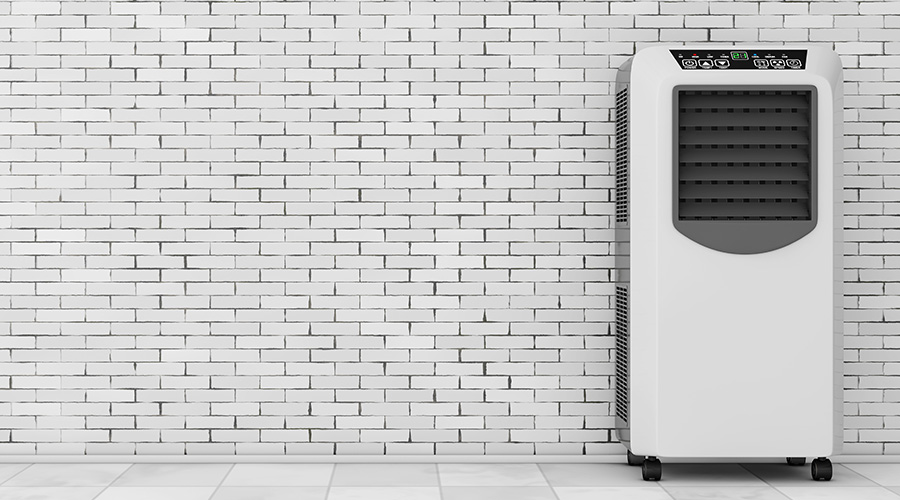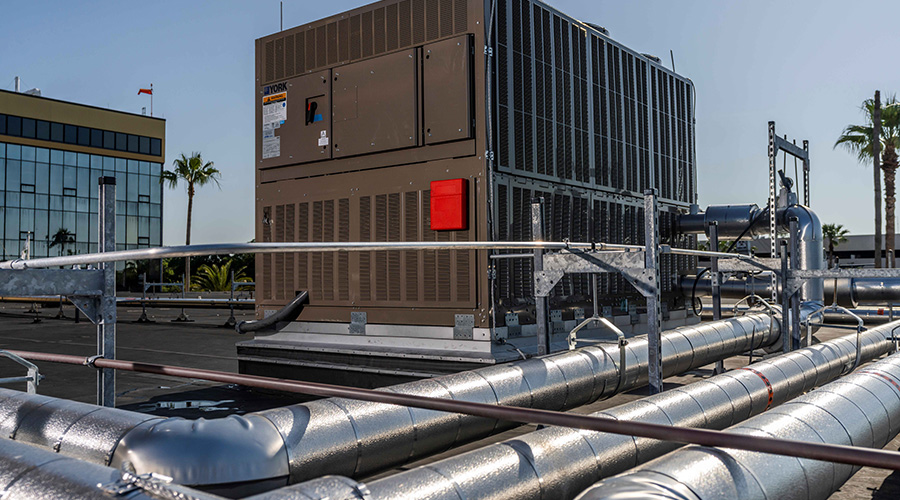Rethinking Cooling Strategies
By looking beyond traditional approaches, managers can deliver lower energy use and operating costs
Engineering and maintenance managers have a range of options when it comes to replacing cooling equipment in existing buildings. These options have given them an unprecedented ability to improve system performance while cutting energy and operating costs.
But these options also have made the process of selecting and specifying equipment more difficult. This is especially true when the most efficient and reliable equipment for a particular application might not be the least expensive. For managers to procure the most suitable equipment, they first must do their homework.
Determining need
The first and most important step in specifying high-efficiency, reliable cooling equipment is to break with the traditional practice of simply buying a new version of the old system. For example, if a 350-ton centrifugal chiller needed replacement, the traditional practice was to specify a similar 350-ton centrifugal chiller as a replacement unit.
The driving assumption behind this approach is that the old chiller met the cooling needs of the facility, so it was OK to replace it with a similar chiller. The problem with this approach is that while the original chiller might have provided adequate cooling, managers have no guarantee it is the most efficient or reliable option available.
The first step is to consider system use. Does the facility or area require cooling 24 hours a day, seven days a week, 365 days per year? Or is the cooling requirement limited to only certain hours per day and a limited number of days per year? Is the cooling load fairly constant, or does it vary significantly by time of day and day of the year?
Managers also need to consider the impact service interruptions have on the operations taking place within the facility. Does the loss of the cooling equipment mean operations must be shut down, or can they continue uninterrupted in such a situation? If the conditioned space is leased, is there a financial penalty assessed against the property manager or owners for downtime?
Next, examine the system’s performance. If maintenance records are available, carefully review them to determine the system’s operating costs, the frequency of breakdowns and the duration of service interruptions.
One additional step in determining cooling needs is to consider the match between the capacity of the cooling system and the actual cooling load. Is the system significantly undersized or oversized?
The level of churn in commercial facilities, for example, means managers must constantly re-evaluate the performance of their cooling systems based on load changes that take place as tenants and operations change. Though the operations are different in health care and education facilities, the attention to changing operations is essential in specifying successful cooling systems.
Undersized systems will not provide enough cooling and dehumidification, while oversized systems will operate less efficiently.
Flexibility over size
Replacing one large central chiller with multiple smaller — even portable — units is one option managers have that can vastly improve both reliability and efficiency.
In terms of reliability, consider this: The single-chiller option gives managers no level of backup in the event of a chiller failure. If the chiller goes down, the facility is without air conditioning until repairs take place.
If replacement parts are not readily available or if the problem requires major service, the outage can stretch from days to weeks, further disrupting operations throughout the facility.
Single-chiller operation also hurts operating efficiency. When managers select chillers for particular applications, they size them to meet the peak cooling load they expect for that application, even though that peak cooling load will occur for only a few hours in a typical year.
This means the chiller will operate under part-load conditions for more than 95 percent of the time. Chiller efficiency peaks when the chiller is operating at full load, so this situation results in a significant decrease in seasonal operating efficiency.
Replacing one, large chiller with multiple, smaller chillers helps to eliminate both of these problems. With multiple chillers, the loss of a single unit will reduce but not eliminate cooling capacity.
Specifying multiple, smaller units also allows managers to stage their operation based on the facility’s cooling requirements and allow the chillers to operate for longer periods of time at near full load, increasing their overall seasonal operating efficiency.
Additional choices
Another option managers have when replacing large centrifugal chillers is to use oil-free compressors. Unlike conventional chillers, oil-free compressors use magnetic bearings to support the impeller and its rotating shaft.
Because these units use no mechanical bearings or oil, they offer improved reliability, lower maintenance, and higher operating efficiencies — often, up to 30 percent annually. Units are available in capacities of 60-160 tons, making them well-suited for applications where multiple smaller chillers replace one large chiller.
In smaller heating, ventilation and air conditioning applications, managers can specify ductless, split systems in place of the conventional ducted system. Ductless split systems can provide both heating and air conditioning for individual spaces or for up to five zones.
These systems consist of an outdoor condensing unit connected to an indoor, non-ducted air-handling unit by only the refrigerant and electrical lines. Installers can mount the interior portion of the system practically anywhere, making the units very flexible for a range of applications.
With no duct losses, the systems also offer improved operating efficiency over conventional ducted systems, typically 10-20 percent. No ductwork also means the systems are less expensive to install and require very little room.
Finally, managers can specify portable coolers with 1-5 tons of capacity to provide heating and cooling in smaller applications, such as hospital rooms, small offices, data centers, and portable classrooms. These units can operate in emergency situations, or they can provide supplemental heating and cooling to keep occupants comfortable and equipment running smoothly.
Success Through Teamwork
Once managers have identified a replacement cooling system, it is important they bring their organization’s purchasing agent into the decision-making process.
In most situations, the least expensive option is to simply replace existing systems in kind. But in-kind replacements rarely give managers the performance and reliability they are looking for.
To select systems and components that are not the lowest first cost, managers will have to gather and organize enough information to justify the additional expense. The final challenge for managers is to successfully package and present: system costs and benefits; operating cost savings; life-cycle costs; and performance and reliability enhancements.
The more purchasing agents participate in this process, the more likely it is managers will succeed and end up with the most appropriate system for the application.
— James Piper, P.E.
|
James Piper, P.E., is a national facilities management consultant based in Bowie, Md. He has more than 25 years of experience with facilities maintenance and engineering management.
Related Topics:











